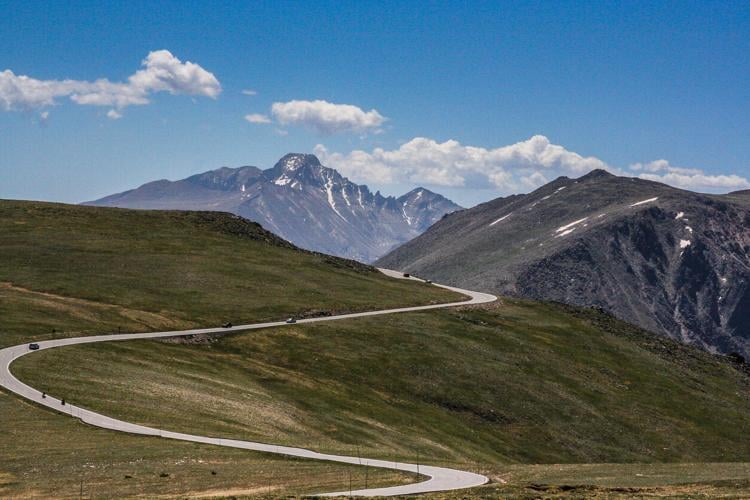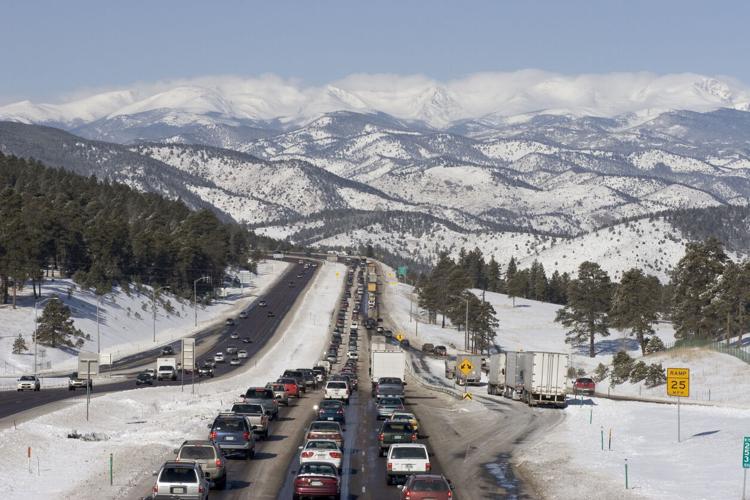Stay in the right lane – literally – and 9 other mountain driving tips for Colorado
It doesn’t take many miles on Colorado’s mountain roads to notice a few common mistakes that drivers tend to make and a few common nuisances.
Here’s a list of tips that will help you better navigate Colorado’s mountain roads.
1. Slow drivers should stay in the right lane
In Colorado, drivers should be in the rightmost lane possible unless they’re passing or instructed otherwise. This can become a big issue on mountain roads when designated passing spots are infrequent and brief. Slower drivers should always move to the right lane during these portions of the road as long as it’s safe to do so, thus allowing faster drivers to pass, preventing traffic back-up (See point 2).
2. Pull over to let the the “conga line” pass
If you’re driving at a slower speed on a one lane road in the mountains and notice a long line of cars forming behind you, simply pull over to the side of the road when it’s safe to do so to allow other drivers to pass. This prevents these cars passing one at a time, which creates a much riskier scenario – especially when a longer vehicle like a semi-truck or recreational vehicle may be causing the back-up.
3. Stop tailgating!
We get it, you’re in a hurry and one of the more important people on the road. However, tailgating and other passive aggressive acts of road rage only make mountain roads more dangerous. In a mountain road environment, there’s no room for this additional risk. If the person in front of you is driving slower than you’d like to be driving, take a breath, give them some space (they may already be nervous on the mountain road), and wait to utilize a spot designed for safe passing.
4. Follow the traction laws
Colorado’s traction laws are in place for a reason and not following them can result in big fines – up to $650. More importantly, not following traction laws can put those around you on the road at risk. Know the traction laws and also know that some stay in place the entire winter season – whether or not there’s snow on the ground. Read more about Colorado’s traction laws here.
5. Be highly aware of multi-use roads
Many of Colorado’s roads can be used by methods of transportation other than vehicles. Watching out for cyclists is a key concern on many mountain passes. That being said, you may also encounter things like snow plows, tractors, horses, and skateboarders that don’t mirror typical traffic flow patterns. Be aware and always be on the lookout.
6. Don’t disrupt traffic to take a picture
Don’t drive slow to take a picture. Don’t serve across lanes while taking a picture. Don’t stop in the middle of the road to take a picture. All of these things can be dangerous and extremely annoying to other drivers. Instead, pull off the road in a safe place to do so and snap the shot. Your photo will probably turn out better anyway.
7. Don’t trash the state (or start a fire)
Mountain highways are often in very remote, difficult to clean spots, making it that much more crucial to leave no trace. Don’t toss anything out of the window, even non-native foods like apple cores and banana peels. And whatever you do – don’t toss your cigarette butts. Not only is this polluting, it can also be a major wildfire risk.
8. Keep your eyes peeled for Bambi
Most of Colorado’s mountain roads are in remote places where wildlife roams freely. It’s important to manage your speed and stay aware of animals that may step into your path. In a road where a few feet can mean the difference between life or death, it’s better to travel slow and arrive late.
9. Know your brakes
Colorado’s mountain roads consist of many ups and downs. Make sure your vehicle is in working order before taking them on and be aware of when you may need to take a break due to hot brakes.
10. It’s okay to drive slow, just do so responsibly
Colorado’s mountain roads can be intimidating and aren’t meant for every vehicle. Some drivers will need to drive slow to feel comfortable or stay within their vehicle’s capabilities. If that’s you, be aware of how your slow driving is impacting traffic around you and consider points 1 & 2.






